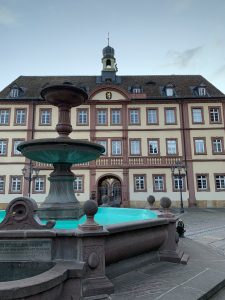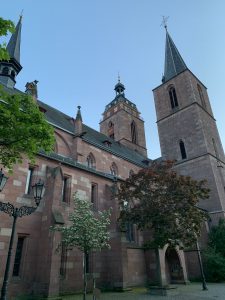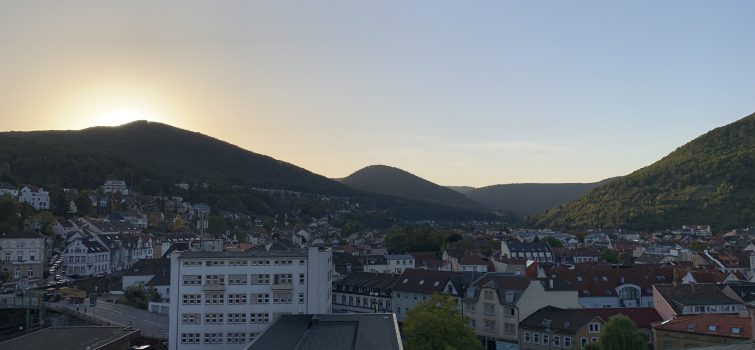Neustadt an der Weinstraße
 Neustadt an der Weinstraße is a small but really beautiful and cozy German city, located in the southern part of the street Weinstraße. This city is surrounded by endless vineyards and from one side by Nature Park Palatinate Forest (UNESCO). Neustadt is the administrative centre of Rheinhessen-Pfalz district, the center of wine trade. Interesting location, wine festivals, weekly markets and sightseeing attractions make this city a very popular touristic destination.
Neustadt an der Weinstraße is a small but really beautiful and cozy German city, located in the southern part of the street Weinstraße. This city is surrounded by endless vineyards and from one side by Nature Park Palatinate Forest (UNESCO). Neustadt is the administrative centre of Rheinhessen-Pfalz district, the center of wine trade. Interesting location, wine festivals, weekly markets and sightseeing attractions make this city a very popular touristic destination.
 The first recorded mention of the villages of Winzingen, Lachen and Speyerdorf was in 774 year. But this place was called a Neue Stadt in the early 13th century. Formally the city called Neustadt an der Haardt, the town was renamed to denote it’s location on the wine rout and meaningful role in the wine trade.
The first recorded mention of the villages of Winzingen, Lachen and Speyerdorf was in 774 year. But this place was called a Neue Stadt in the early 13th century. Formally the city called Neustadt an der Haardt, the town was renamed to denote it’s location on the wine rout and meaningful role in the wine trade.
Neustadt is the only city in the Palatinate where  exists the largest number of
exists the largest number of
timber-framed houses. The best way to explore the city is to walk along cobblestoned streets of old town centre and visit the historical market square with kings fountain, baroque municipal building and gothic abbey church.
Collegiate church is a notable medieval building of 14th century with the world’s largest casted steel bell weighing 14 tons in it’s north tower. This church was reconstructed in the 18th century with erecting wall inside of the building and construction of two different towers. And since those time the church
 is shared by Protestants and Catholics. Catholic’s part has interesting baroque
is shared by Protestants and Catholics. Catholic’s part has interesting baroque
altar, Protestant’s part is famous for unique mosaic. On Saturday tourists can ascend the stairs of the highest tower and enjoy charming atmosphere, architecture and beauty of old town from a birds-eye view.
There are different museums and exhibitions in Neustadt an der Weinstrasse, that can attract and amaze tourists from all countries. One of such museums is the Neustadt Railway Museum, located in the main station of the city. Wide range of original vehicles, steam locomotives and wagons are exhibited in the historic locomotive shed of the Palatinate Railway and tell us about history and development of railways in Germany.
Outlying villages with interesting and historical attractions, castles, ruins, fortresses are also of great interest for tourists. The most beautiful is wine village Hambach with outstanding baroque church of 12th century and the famous castle often named as the “cradle of German democracy”.

